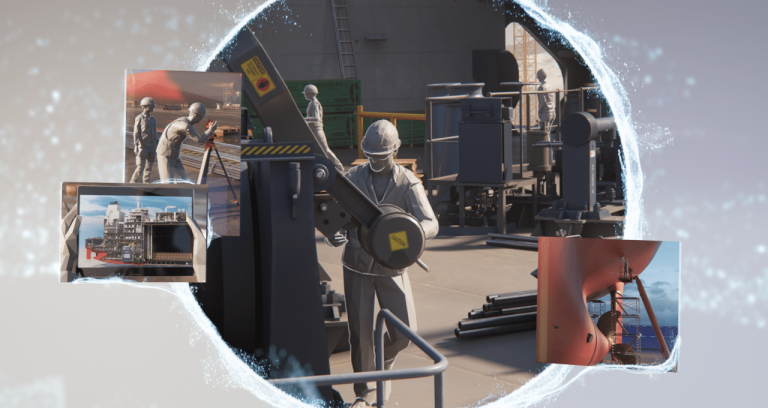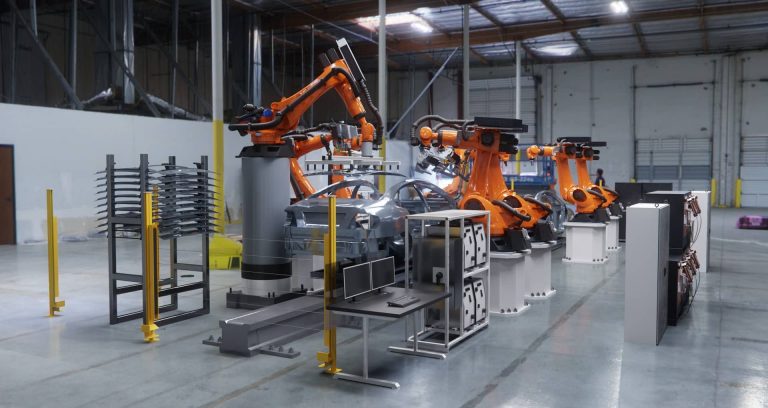If you’ve been keeping up with the news, you’ve likely seen a surge of articles about new wearable technology. Similar to Google Glass, these devices let people project a virtual world over the top of the real world.
As more and more of these devices hit the market, VR developers are seeing an opportunity to branch out and create mixed-reality experiences. So we spoke with the co-founder and president of Resolution Games, Paul Brady, to ask him his thoughts on the VR and AR world.

Resolution Games was one of the first gaming studios to enter the VR market. And recently, they started focusing almost a fifth of their efforts into mixed reality games. This year, Paul says that’s rising to almost half. But why? What’s so exciting about mixed reality? Let’s see what he had to say.
What’s the difference between VR and AR?
Virtual reality games are where the player is completely immersed in the experience. They replace the real world with a virtual one, and the headsets typically block out your view of the outside world.
On the other hand, augmented reality is where the player can see the real world – but there are virtual elements overlaid on top of it.
“In VR, you have the whole environment to consider,” Paul explained. “You get to control the whole experience – the environment and gameplay. While in AR – mixed reality – you don’t have that control. You have more restrictions. But what’s amazing is that you can relate and integrate with the environment.”
This allows players to interact with an environment they’re familiar with in completely new ways. You could hammer a hole through a wall and open a portal to a different dimension.
Resolution Games recently showed the portal wall concept in mixed reality at the Game Developer Conference (GDC) when they shared for the first time a room-scale prototype of Spatial Ops. (The open beta of Spatial Ops that requires a larger player space is currently available on SideQuest.)
Or it could be something simpler. For example, Demeo is Resolution Games’ answer to the tabletop role-playing scene, and the studio has recently integrated a mixed reality mode. You have your pieces, fully animated, on your actual dining table. If you’ve ever played a board game, often a lot is left to the imagination. But mixed reality brings that to life.
“With mixed reality, you can stay engaged with the environment. You get the best of both worlds,” Paul said. “Whereas with VR, you’re getting fully immersed. Which you choose really depends on the experience you want to create.”
What makes a good VR or AR game?
While there’s a fundamental difference between VR and AR, there are also quite a few similarities. For one, the game design principles behind them. The key, Paul explained, is making sure that they’re accessible.
“When we first started making VR games, lots of developers were making jump scares and shooters,” Paul said. “We believed there could be experiences that relaxed people, rather than scared them.”
This is why they released Bait! as one of their first titles. A simple fishing game that’s still one of the most popular VR games to date. Largely because it’s so simple to dive in. It doesn’t need to be all about hardcore action, they learnt.
Use board gaming as a starting point
“A good area of inspiration is with traditional board games,” Paul explained. “These can easily be reimagined for VR and AR as the design principles have a lot of similarities.”
Game design in the board gaming world is different from traditional gaming. They shouldn’t last too long – a few hours at most – and they don’t need to necessarily have direct conflict between the players. This makes them quite fertile ground for developers to find inspiration.
“The average playtime for Demeo is around three hours,” Paul said. “That’s actually longer than the battery life of some headsets. People will actually plug in and recharge halfway through a session.”
People tend to only want to wear a headset for a short period of time. It can often get uncomfortable after a few hours. So getting people to plug in the charger and want to stay in the world just a little longer is quite an accomplishment. But it highlights the need to have very clear limits on a session length – much like in board gaming. A couple of hours is great. But all-day sessions, like a PC or console game, aren’t likely to work.
Get into the action quickly
Another key to successful VR and AR games is making sure your player gets the content as quickly as possible.
“One of the requirements of all our games is that you need to be able to get into the game within minutes,” Paul said. “There’s a lot of preambles – checking the space, putting on the headset, launching the game – and we know there’s a clock ticking. How long are people really willing to wait before they start having fun?”
Make it social
When immersed in a different world, people naturally want to share that experience with someone else. VR has now got to the point where there are enough players to justify creating multiplayer titles, even if it’s only a handful of players at once.
“We feel like when people are in these virtual environments, they want to hang out with other people in these spaces,” Paul said. “That’s why most of our games are social multiplayer.”
Don’t feel like you need to move around a lot
A common misconception is that the player should be moving around all the time. But that’s just not true. People are happy to stay in a single space, as long as the mechanics themselves are fun.
“In most of our games, you’re just sitting or standing,” Paul said. “We don’t have a lot of locomotion. A large part of that is because we’re trying to avoid giving people motion sickness. And this has led to a lot of positive feedback from our players.”
What are the challenges of AR?
While there are more and more headsets that allow for augmented reality gameplay, there are still quite a few challenges to overcome. The processing power of the devices isn’t quite enough to cope with modern graphics, they’re expensive to buy, and there isn’t a huge audience just yet.
“There are problems to solve and standards to set,” Paul said. “But that’s what makes it so exciting. It’s untapped ground.”

One example is that you’ve got to be hyper aware of the player’s physical living space. They might only have a small space. If you assume they’re going to have a large room, you could create an environment that’s too big and clips through their real-world walls. This completely kills the immersion.
Problems like these will inevitably be solved. There’s plenty of new ground to break for those excited by the prospect of carving their name into gaming history.
Mixed reality is the new frontier
Developers have the opportunity to break into a completely new gaming segment if they start early. We can see the potential on the horizon. It’s only a matter of time before it arrives.
“AR potentially has a much bigger gaming market than VR,” Paul said. “The headsets coming out will need enough productivity apps – navigation and task management – to see widespread appeal. But it’ll get to the point where you won’t need your phone anymore, you’ll just have the glasses instead.”
At that point, AR games will likely explode in popularity. We’re not quite at the mass adoption stage right now, Paul admits. But developers can start to experiment with mixed reality now. For example, Quest 2 VR headset has the Pass Through feature. This is a perfect way to prototype and get ready for the surge of mixed-reality devices.
By experimenting using the Pass Through feature, developers can get to grips with the design principles and port those experiences over to true mixed reality headsets later down the line.
Either way, AR and VR are more accessible than ever, particularly with tools like Unity and Unreal that make building games for multiple platforms much easier. Paul’s recommendation? There’s never been a better time to get started.










